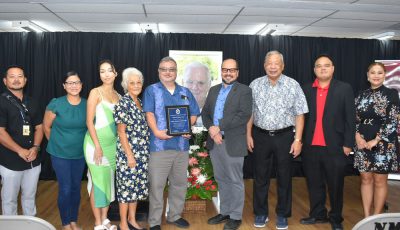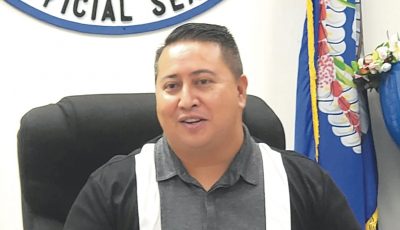How the ‘Build Back Better’ plan can benefit US territories
Editor’s note: The following is the author’s written testimony before the U.S. House Committee on Natural Resources’ oversight hearing on “How the Biden Administration’s Build Back Better plan can benefit the U.S. territories.” It is being published as a series due to its length. The first part was published on March 26, 2021; the second on March 29, 2021.
Third part of a series
The CNMI’s Draft Comprehensive Sustainable Development Plan envisions applying Smart, Safe Growth and other development guidelines to holistically improve resource use across sectors. Much like the “Build Back Better” initiative, the CNMI’s first Comprehensive Sustainable Development Plan recognizes the need to align infrastructure investments to achieve modern infrastructure that supports good education and health systems as well as good paying jobs. The goals and objectives identified in the Comprehensive Sustainable Development Plan identify metrics for renewable energy and water systems deployment while recognizing need to also continue to invest in education and social services. These planning efforts align with national efforts to address the climate crisis, build a clean energy economy, address environmental injustice, and create millions of good-paying jobs. As reflected in the CNMI’s 2019 Comprehensive Economic Development Strategy, investment in our social and built infrastructure is anticipated to help diversify and stabilize our economy, an effort that is needed now more than ever as we work to recover from the financial and community impacts of COVID19.
Challenges and opportunities
Dedicating resources toward the financing of infrastructure is critical but is only one step toward the modernization of the CNMI’s infrastructure. This committee is familiar with the CNMI’s ongoing struggles to support the demands of the economy with the present workforce, and in the environment of severe infrastructure demands, the availability of construction workers in particular represents a significant limitation to our ability to advance our community. As the nation works to Build Back Better, there are opportunities to acknowledge and address the unique capacity and infrastructure challenges of the U.S. territories in order to work toward national efforts to provide immediate and long-lasting relief to our communities and businesses.
As indicated in the recent CNMI Economic Census, produced by the U.S. Census Bureau, the CNMI currently has 2,803 individuals employed in the constructions trades. By way of demonstrating the severe limitation this has on the ability to undertake large-scale and essential developments, one project alone, the Tinian Divert Airfield construction by the U.S. Air Force, has the potential to require as much as 2,099 construction workers for the development of this critical infrastructure project for the United States armed forces. This one development may require 75% of the available construction labor present in the CNMI. The ramifications are not solely isolated to availability of workers. As increased demands continue to be placed in support of ongoing developments, costs associated with construction will grow rapidly, reducing the efficacy of federal infrastructure dollars and limiting the range of opportunities that would otherwise be available per dollar of investment in the larger United States.
In one year alone, between 2019 and 2020, the average wages within the broad classification of construction occupations increased by 26.3%. With construction wages far in excess of federal minimum wage standards and in line with prevailing wages across occupations, it is clear that the issue is centered around the supply of labor available to a small island economy of our size.
The prudent utilization of federal funds, in both proposals contained in the Build America Better package, or in the present construction activities to support military development and disaster recovery and resilience requires a long-term solution to the CNMI’s construction worker difficulties.
I ask for this initiative to revisit this longstanding conversation, and for your understanding of our circumstances both in need for greater levels of infrastructure investment and the means by which we can adequately utilize this investment to break ground and complete these projects. In 2020, through the Further Consolidation Appropriations Act of 2020, Congress recognized these limitations in providing for a separate allocation of 3,000 CW-1 visas for foreign workers engaged in construction trades, with the caveat that the workers must be employed in the service of an existing contract directly connected to or associated with recovery from a presidentially declared major disaster or emergency. I would submit that the present state of the CNMI’s infrastructure constitutes a looming emergency, and that this apportionment be broad in its application to permit the 3,000 CW-1 allotment for all construction activities, to support continued public and private investment throughout the CNMI.
To be continued
Ralph DLG Torres (Special to the Saipan Tribune)
Ralph DLG Torres is governor of the Commonwealth of the Northern Mariana Islands.



























